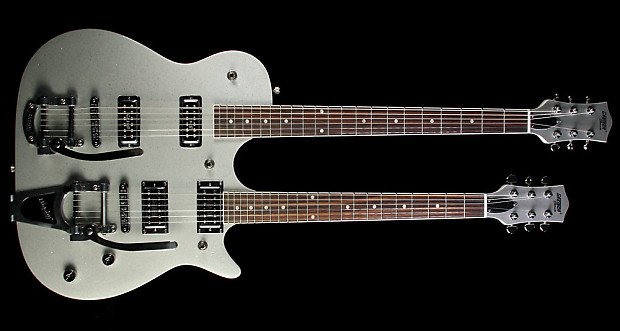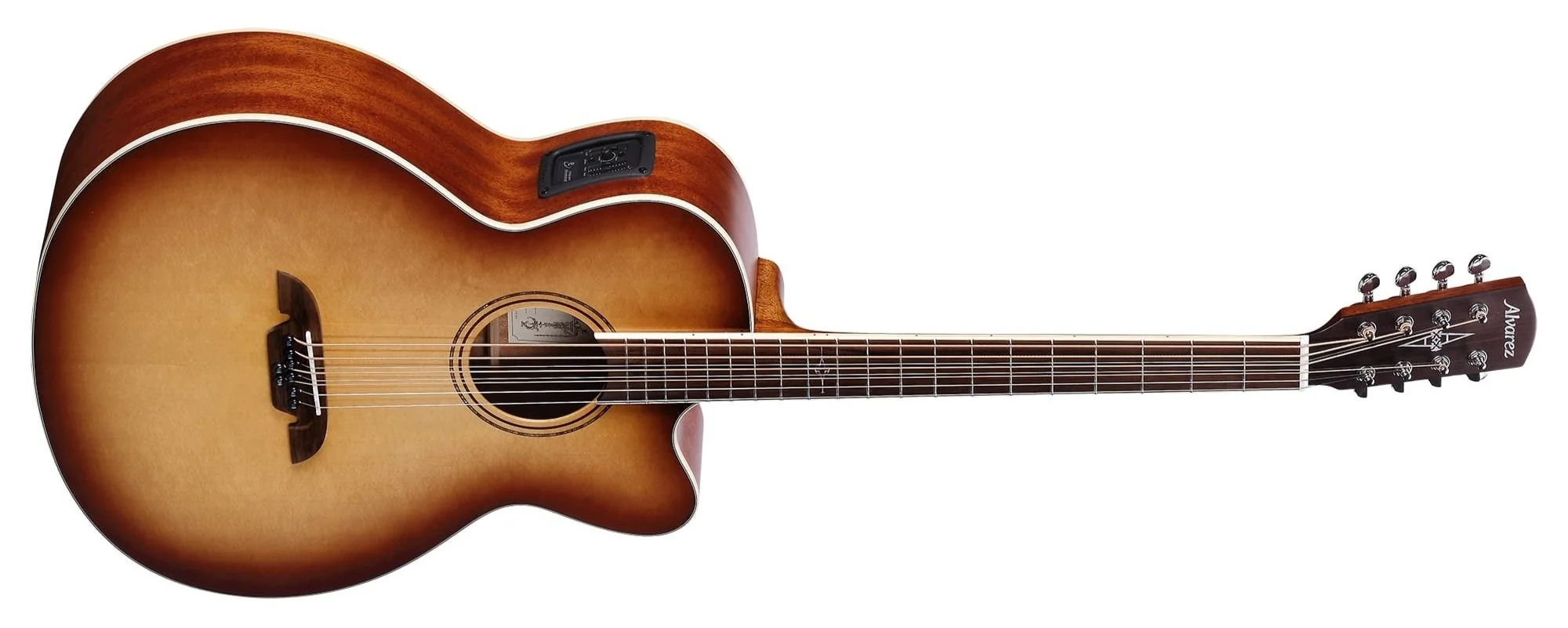Have You Considered a Baritone Guitar?
Baritone guitars have been around for a long time but have always been a niche market. This is too bad because they tend to get slotted into particular verticals. For example, as they are tuned down, most recent baritone discussion has been around their fit in the metal space. Metal folks do seem to find a use for them, but be assured that you don’t have to be a metal player to choose a baritone.
My good pal Cody turned me on to a YouTube channel called Chords of Orion. While it recently has become more of a gear demo channel, originally it was focused almost entirely on ambient guitar. I don’t play ambient exclusively but there are days where it is very relaxing and mind freeing. When the host talked about using a baritone guitar as his most common instrument, and liking the sound I was hearing, I decided to do some research.
Gretsch G5566
My introduction to baritone guitars came via the electric doorway. I was in my local guitar shop and was intrigued by a Gretsch double neck in a silver sparkle finish. Both necks were six string necks but one neck was much longer, indicating a longer scale length. I am a double neck geek so I asked Cody what it was. Cody plays many kinds of music but since his favourite amp is a Mesa Engineering Triple Rectifier, you might conclude that he likes the metal a bit. He told me that the guitar was a baritone and a regular six string. Both necks had Bigsby tailpieces and while I love the look of a Bigsby, own enough of them to know that they will go out of tune if you look at them funny. I was skeptical.
He took the guitar off the wall for me as it was hanging out of reach and I tried it very briefly through a clean amp as I am not a metal person. I was immediately captured by the tonal variances that this guitar brought. I arranged a short term test and as often happens, bought the guitar.
My Gretsch G5566 Baritone/Standard doubleneck. These are not made any longer, which is a bit sad given what a wonderful instrument it is.
The pickups on this instrument are very open and airy, and when I started to learn more about ambient guitar, I began to understand how a baritone really fit perfectly into that space. I liked being able to switch between necks, and as I do on my other doublenecks will leave the pickups live on the neck not being played to pick up some sympathetic ringing. You can absolutely push the guitar through heavy distortion and fuzz if you are so inclined. It does exactly what you expect.
The only downside of the doubleneck is size and weight so I began looking at traditional electric guitars with one neck, built as baritones.
What Makes a Baritone a Baritone?
It’s the tuning. By default, baritones are tuned down a fourth from standard. You can tune them any way you like of course, but I find the fourth down to be a really aurally intriguing place. That means it is tuned low to high B - E - A - D - F# - B. A benefit of this tuning is that all the chord shapes that you know work exactly as in standard tuning. This makes the transition quite easy although of course the chord names change to reflect being down a fourth. For example what we know as an E Major chord fingering in standard is a B Major chord in baritone.
It is absolutely possible to tune a standard scale length guitar to baritone, but the strings get very sloppy. The longer scale length of the baritone neck makes up for this and the transition is therefore a lot easier when moving from standard to baritone and back, whether you are using a doubleneck or a more traditional guitar.
Paul Reed Smith SE 277
Watching Chords of Orion, the host uses a variety of baritone guitars. He tends to stick to electrics and it was there that I saw him using a pair of Paul Reed Smith baritones. PRS makes their baritones solely in the SE line. As of this writing, there is only one model in one colour (shown at the start of this article). I can usually depend on PRS photography to really show how beautiful their guitars are. Not this time I am sorry to say. In person, the guitars look much better than in the images.
This is like the SE 277 I play the most
Because of the excellent price / performance of the SE family, I ended up buying two different SE 277s. My first is a solid body, in a red firemist and it is the one that I play most often. The second is a semi-hollowbody in natural with P90 soapbars. That one is not made any more, and to be candid, I’m not against that idea. While the build quality is excellent, it just doesn’t sound good unless awash in effects.
This is the soapbar version. I am less impressed with mine compared to the solid body with humbuckers
What About Acoustics?
There are baritone acoustic guitars out there of course. Alvarez builds a fine guitar and their baritone acoustic has an excellent reputation, although there is no dealer near me and so I have not tried one. Regular readers will know that I did buy a used Taylor baritone and return it the next day. I bought it when you couldn’t go into a guitar shop to try the instrument out so it was a drive two hours, pay for it, drive two hours, play it for a couple of hours, pack it up and then the next day the same deal in the car. Everything I like about the baritone was non-existent in that guitar. Since very few acoustic makers are doing baritones, that idea is off my list for now.
Alvarez ABT60 Baritone
Ok, I Want to Try One
There are basically two routes to electric baritone. Route one is the six string flavour and route two is the seven string flavour. In the seven string space look to both ESP and Schecter for credible offerings to give that low down sound. There’s a decent if vocally dense baritone episode over on Anderton’s TV that shows what the seven string sounds like.
If you are more like me and looking at more ambient rather than metal, the six string offerings are wider. Besides the PRS SE 277 there is the Gretsch Electromatic Jet G5260 which is a really nice guitar, and likely easier to find than most anything from PRS these days. In the more vertical market, the Reverend Descent W is well respected, but I have not tried one because there is not a Reverend dealer near me. There is also a Reverend Signature Series Pete Anderson Baritone which is a Tele shape but with three single coil pickups. At the low end of the price curve you can find the Squier Paranormal Baritone Cabronita Telecaster.
Gretsch G5260
Reverend Descent W
Squier Paranormal Baritone Cabronita Telecaster
A baritone guitar won’t cure all ills but it might open you up to trying different approaches regardless of the type of music that you play. You also don’t have to spend a bomb to get into the space. There are good used options out there and the Squier price of entry is pretty low if you can find one. The Reverend is the most expensive, but even that is quite fair.
I hope that you found the article interesting. If you have any questions, click this link and send them in. Thanks for reading and until next time, peace.








